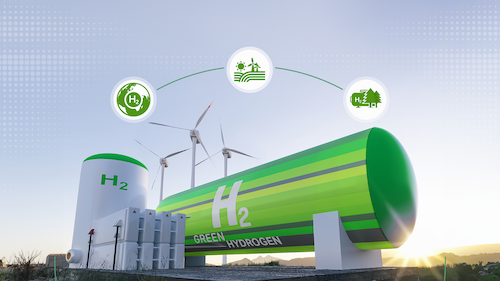India's Green Hydrogen Revolution: Leading the Charge in Clean Energy Transition
Key Ideas
- India's National Green Hydrogen Mission aims to produce 5 million metric tons of green hydrogen annually by 2030, attracting significant clean energy investments and creating hundreds of thousands of jobs.
- The SIGHT programme provides substantial public-sector investment to accelerate hydrogen production in India, offering incentives for electrolyser manufacturing and hydrogen production.
- India's abundance of renewable energy resources, coupled with extensive infrastructure, positions the country as a leader in green hydrogen initiatives, with plans to designate regions as green hydrogen hubs.
- Through strategic partnerships, such as with the European Union and industry consortiums like the India H2 Alliance, India is strengthening its global position in green energy and advancing towards a sustainable future.
India is emerging as a key player in the global transition to clean energy, with a particular focus on green hydrogen. The country's ambitious initiatives and strategic investments are propelling it towards a leadership role in the hydrogen fuel economy. With 46.3% of its electricity already coming from renewable sources, India has set a solid foundation for further sustainable energy development.
The National Green Hydrogen Mission is a significant step by the Indian government to boost green hydrogen production to 5 million metric tons per year by 2030, attracting substantial investments and creating a considerable number of jobs. Concurrently, the Strategic Interventions for Green Hydrogen Transition (SIGHT) programme supports the mission by providing financial incentives for organisations involved in electrolyser manufacturing and hydrogen production.
India's rich renewable energy resources and extensive hydroelectric infrastructure offer a reliable foundation for green hydrogen projects. The country's scale and infrastructure readiness enable the identification of regions as green hydrogen hubs, further facilitating large-scale adoption.
Strategic partnerships with global entities, including the European Union, and industry-led consortia like the India H2 Alliance, underline India's commitment to international cooperation in green energy. These collaborations not only attract expertise and investments but also bolster India's position in shaping the global green hydrogen agenda.
Furthermore, India's focus on developing strategic port infrastructure for green hydrogen exports and integrating green hydrogen into sectors like shipping demonstrates its proactive approach towards expanding its role in the clean energy market. The growing domestic and international demand for green hydrogen in various sectors further emphasizes India's potential to lead the charge in clean energy transition.
Overall, with a comprehensive roadmap, supportive policies, and a collaborative approach, India is poised to drive significant advancements in the green hydrogen sector and contribute substantially to a sustainable energy future.
Topics
Projects
Clean Energy
Renewable Resources
Economic Growth
Investment Opportunities
Global Partnerships
Port Infrastructure
Strategic Initiatives
Industry-led Consortium
Latest News
